Marlin Model 1893
Shooting a Classic .32-40
feature By: John Barsness | September, 20
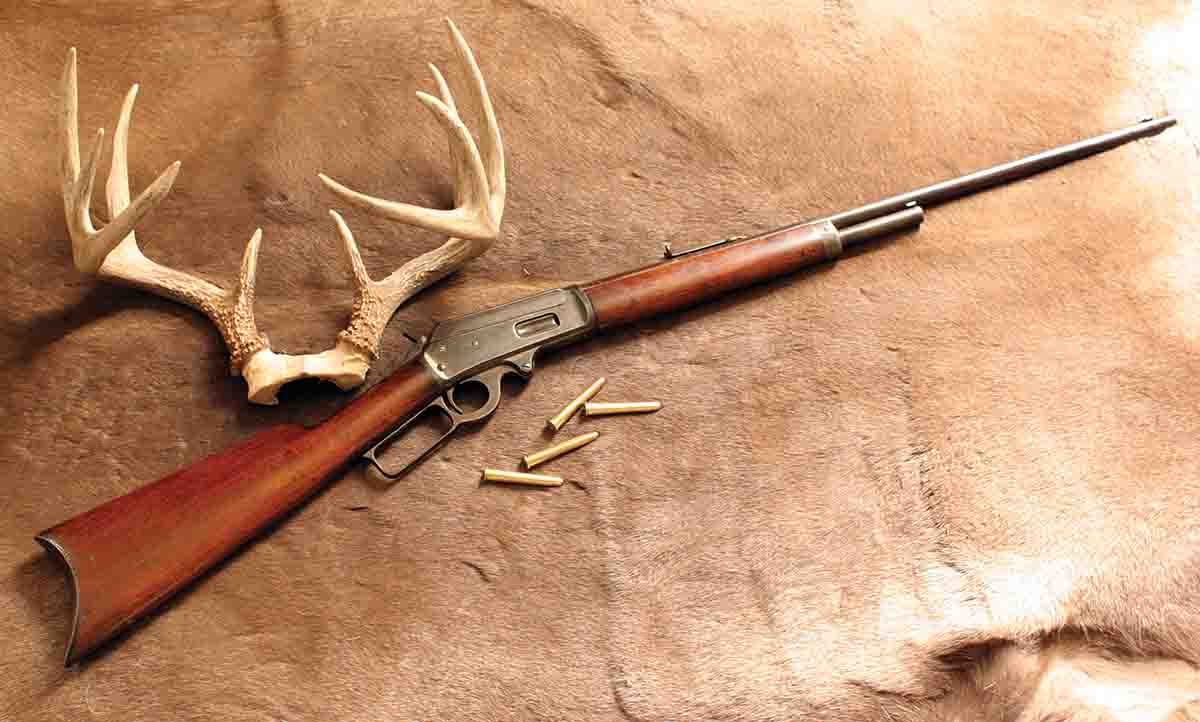
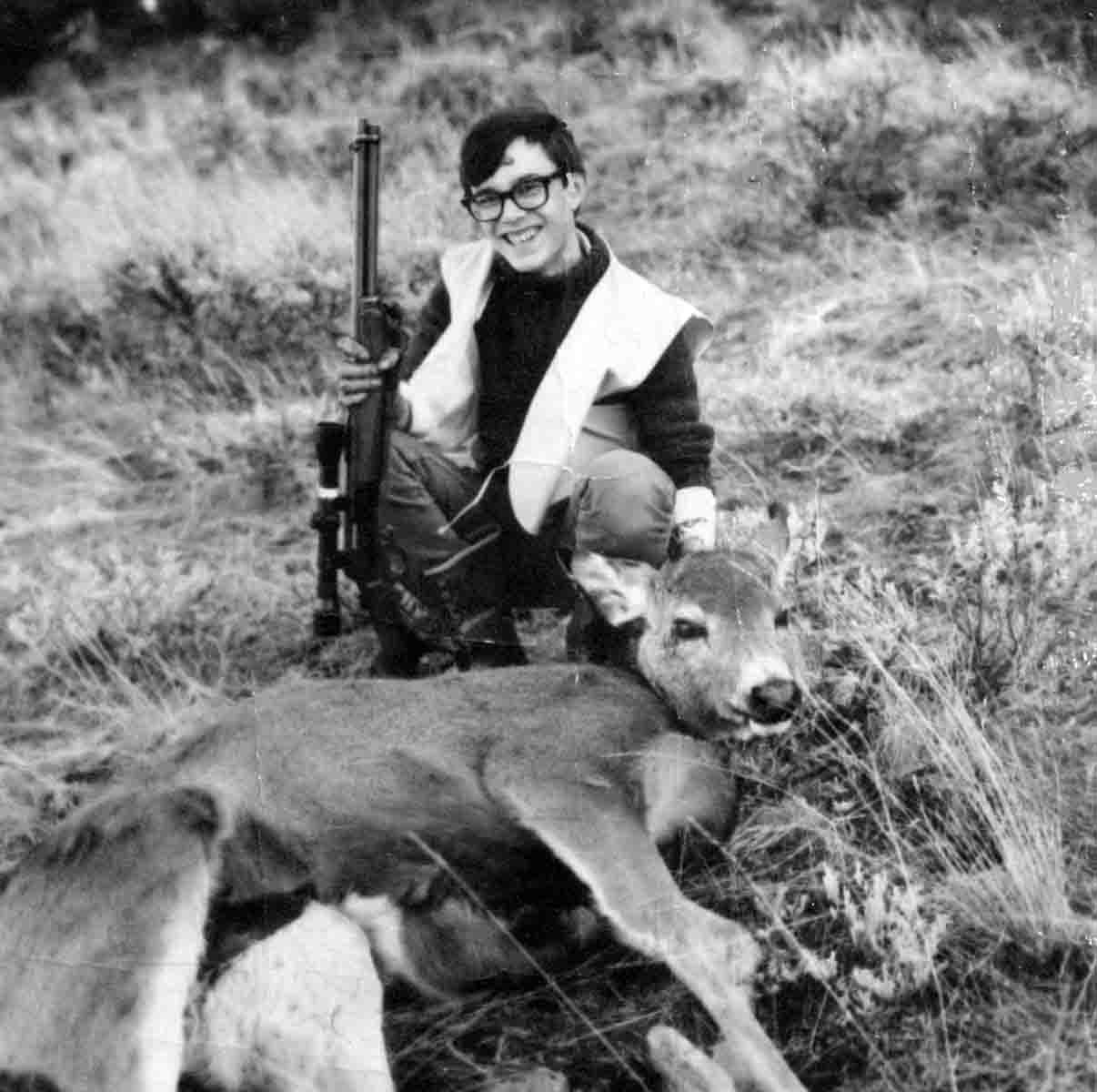
John Marlin’s original company designed and built many different rifles, but eventually became primarily known for lever actions. The first few resembled the popular Winchester lever actions, with tube magazines inside the forend, outside hammers and top ejection – such as the Model 1881, the first repeating rifle chambered in .32-40.
In 1892 Marlin introduced the side-ejection Marlin 1892 chambered for .22- and .32-caliber rimfire rounds, and in 1893 a larger centerfire version appeared, first chambered for the .32-40 and .38-55 and eventually several other rounds. These were often Winchester cartridges, including one Marlin called the .30-30 Smokeless – which is where the .30-30 Winchester got its eventual name, after appearing in 1895 as the .30 Winchester Smokeless.
The side-ejection of the Model 1893 started a long line of solid-top Marlin lever actions, including the Model 36, a slightly modified 1893 introduced in 1936, and today’s 336. A century after the appearance of the 1893, the 336 started outselling the famous Winchester 94 because the Marlin could be easily fitted with a low-mounted scope.
This is exactly why I killed my first big-game animal with a 336 carbine in .30-30 Winchester: In the late 1960s, my father bought a Montgomery Ward “store brand” version of the 336 called the Western Field, mounting a Japanese imitation of the K4 Weaver scope because he couldn’t see open sights very well. He took a mule deer doe with the rifle on opening day, and about a month later, I used it on another doe at the vast range of 40 feet, where irons would have worked just fine with my 13-year-old eyes.
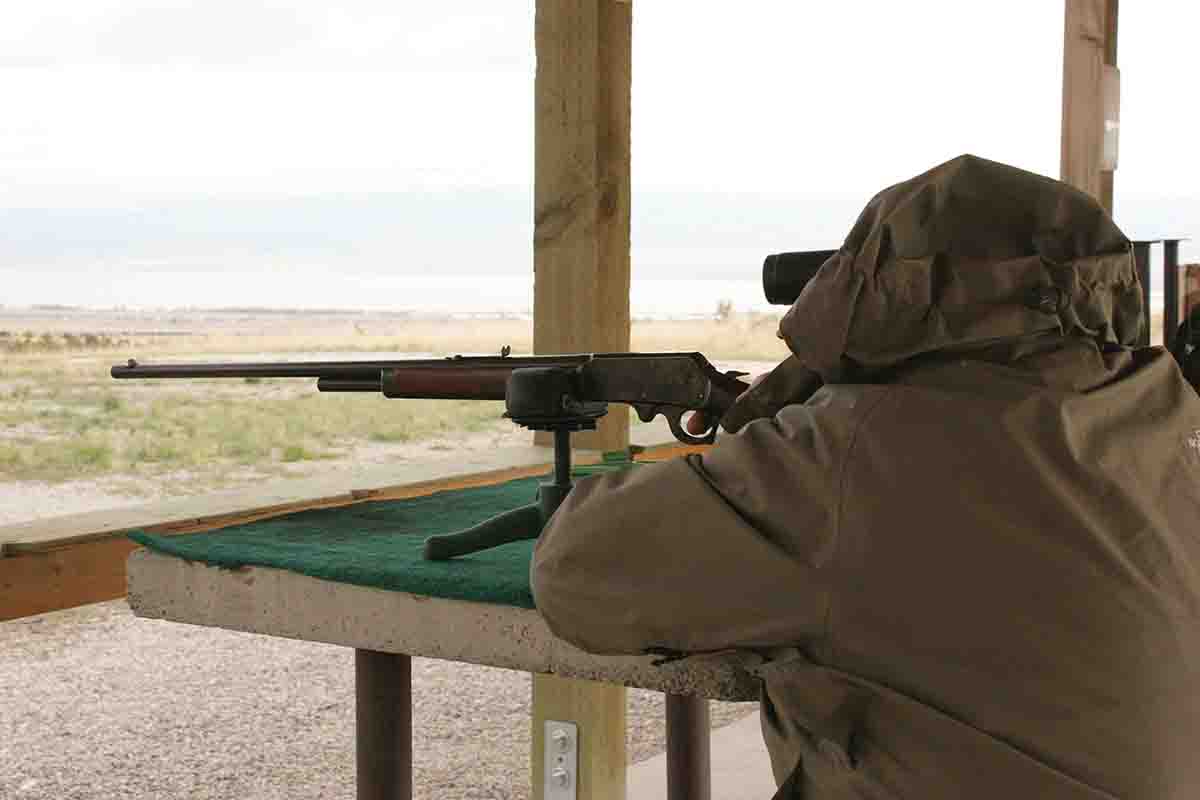
As a result, I developed a soft spot for Marlin lever rifles, over the decades owning a Model 39A .22 rimfire, Model 36 .30-30, Model 336s in .30-30, .32 Winchester Special (also a later chambering in the Marlin 1893) and .35 Remington, along with a couple of modern Model 1895 .45-70s. There was also an octagonal-barrel Model 1893 in .38-55, originally a .30-30 rebored and rerifled by local gunsmith Arnold Erhardt, who makes everything from flintlocks to modern benchrest rifles. Arnold afterward said he would never rebore a barrel again, but like Sir Edmund Hillary and Mount Everest, he simply had to do it once.
The rebored .38-55 shot very well, but I eventually swapped it for something else. However, it definitely planted the seed of desire for an all-original Model 1893. I considered a few over the years but eventually, uh, pulled the trigger on a .32-40 rifle with a two-thirds-length magazine owned by a Vermont hunter named Graham Wachsman, who listed it in the classifieds section of an internet chat room. Part of the deal included some cast gas-check bullets from Montana Bullet Works, coincidentally located about 100 miles from my home. (Graham mentioned that he bought the rifle at North Star Guns in the small town of Richmond, Vermont, a few miles east of Burlington, which carries plenty of older guns. The photos on North Star’s Facebook page show an older wood building filled not only with firearms but a bunch of hunting taxidermy. If I ever get to Vermont – one of four states I have not visited – Richmond will be part of the itinerary.)
I knew from several photos Graham emailed to me that the Marlin had been used considerably, but not abused. He assured me the bore was pretty shiny, which is far more important than a pristine exterior, since very few of my rifles are “safe queens.” When the 1893 showed up, I was immediately impressed by its fine balance and light weight. On my workshop scale it went 6 pounds, 11 ounces, lighter than many of today’s lever-action carbines, despite the 24.25-inch barrel.
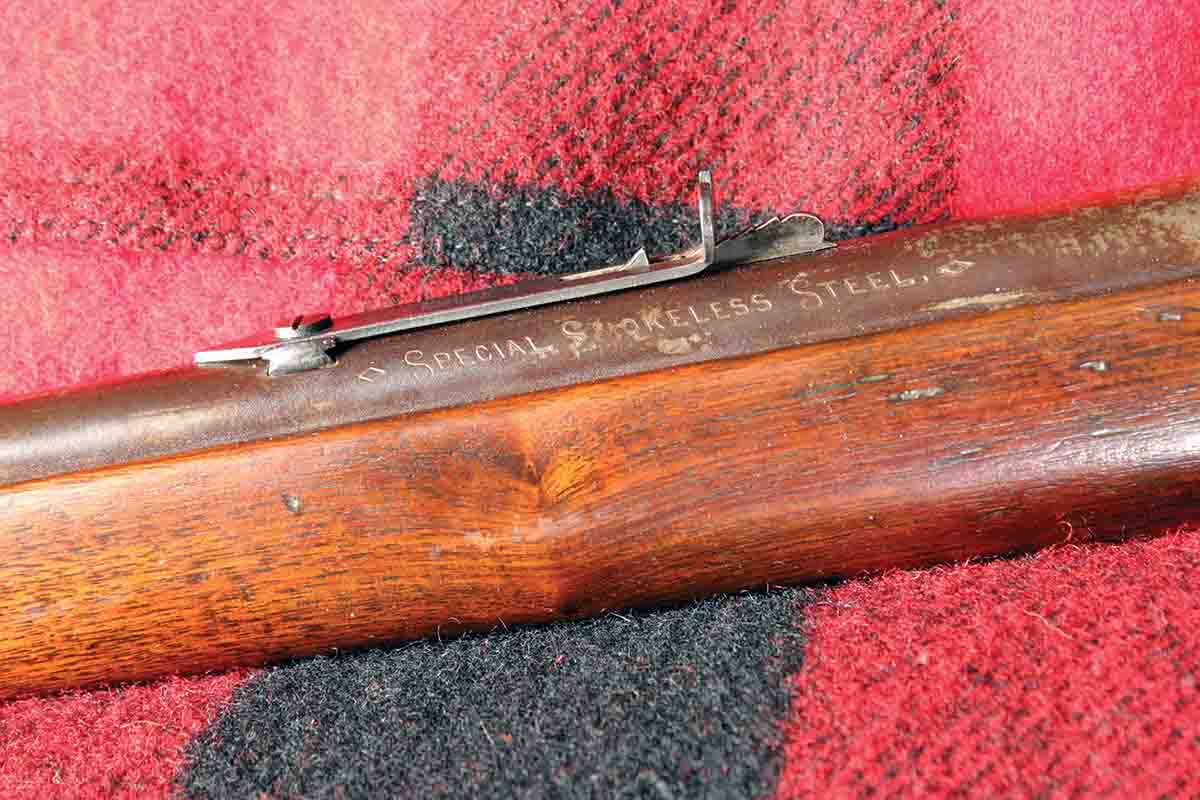
I next checked out the shiny bore, first by eyeballing and then with my Gradient Lens Hawkeye borescope, which revealed a little extremely light pitting, which is typical of many rifles of its time period. Marlin’s older manufacturing records are spotty, but serial number information from several sources indicated the rifle left the factory around 1920, just before non-corrosive primers appeared.
Much of the bluing on the barrel, magazine, action and curved steel buttplate had been replaced by a slick plum-brown, but the walnut buttstock and forend still had plenty of finish – along with small use-dings, but no cracks. The barrel markings included an artistically etched “Special Smokeless Steel” along the left side under the rear buckhorn sight, and on top, just in front of the action, a small stamped “.32-40” – without any added name, such as Ballard, Marlin or Winchester. My Timney trigger gauge measured the pull at a crisp and extremely consistent 3 pounds, 2 ounces, lighter than the pull of any of my other Marlin lever actions.
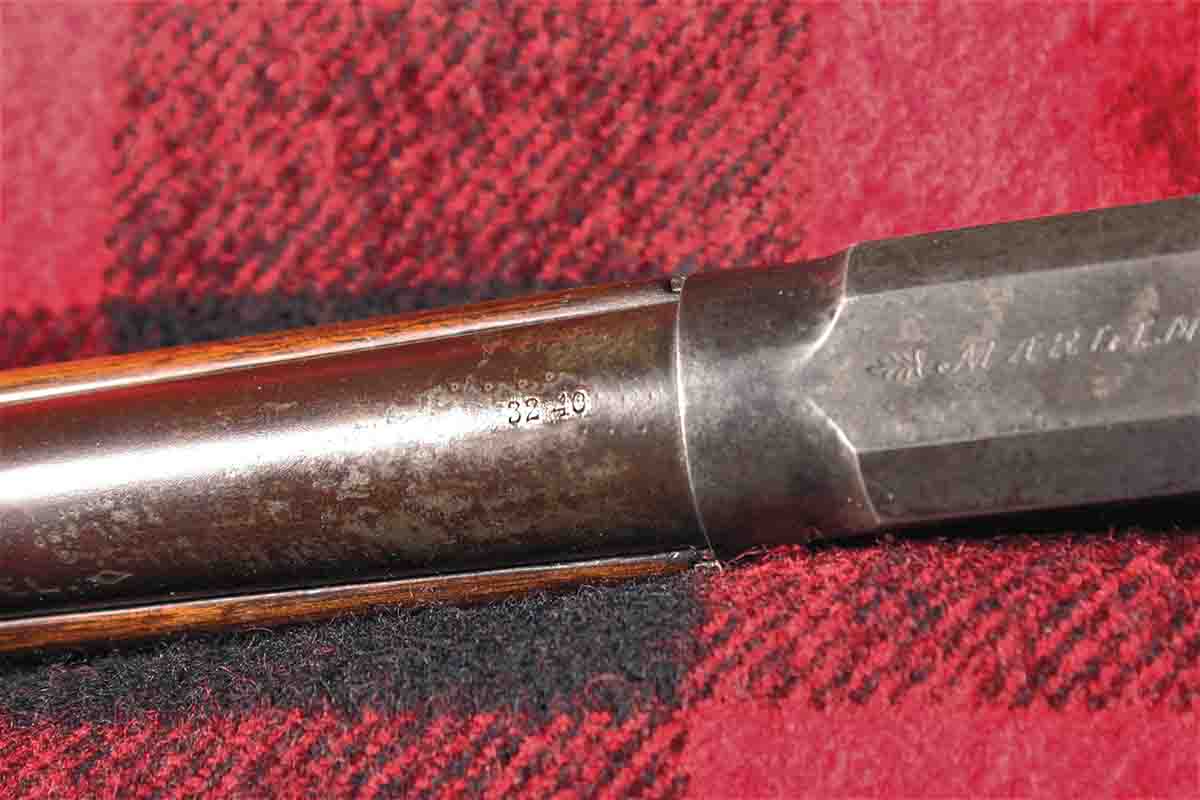
Unfortunately, these hot factory rounds turned out to be too much for older single shots like the Ballard. Eventually smokeless .32-40 loads were tamed down to 1,440 fps, probably after the Sporting Arms and Ammunition Manufacturers Institute (SAAMI) was organized in the late 1920s, in large part to prevent such screwups. This is also why several of the loads listed in Ken Waters’ “Pet Loads” article in Handloader No. 39 (September-October 1972) on the .32-40 are accompanied by: “Do not use in weak actions!” Around 1940, the wimped-down factory ammunition was discontinued, and .32-40 owners had to handload.
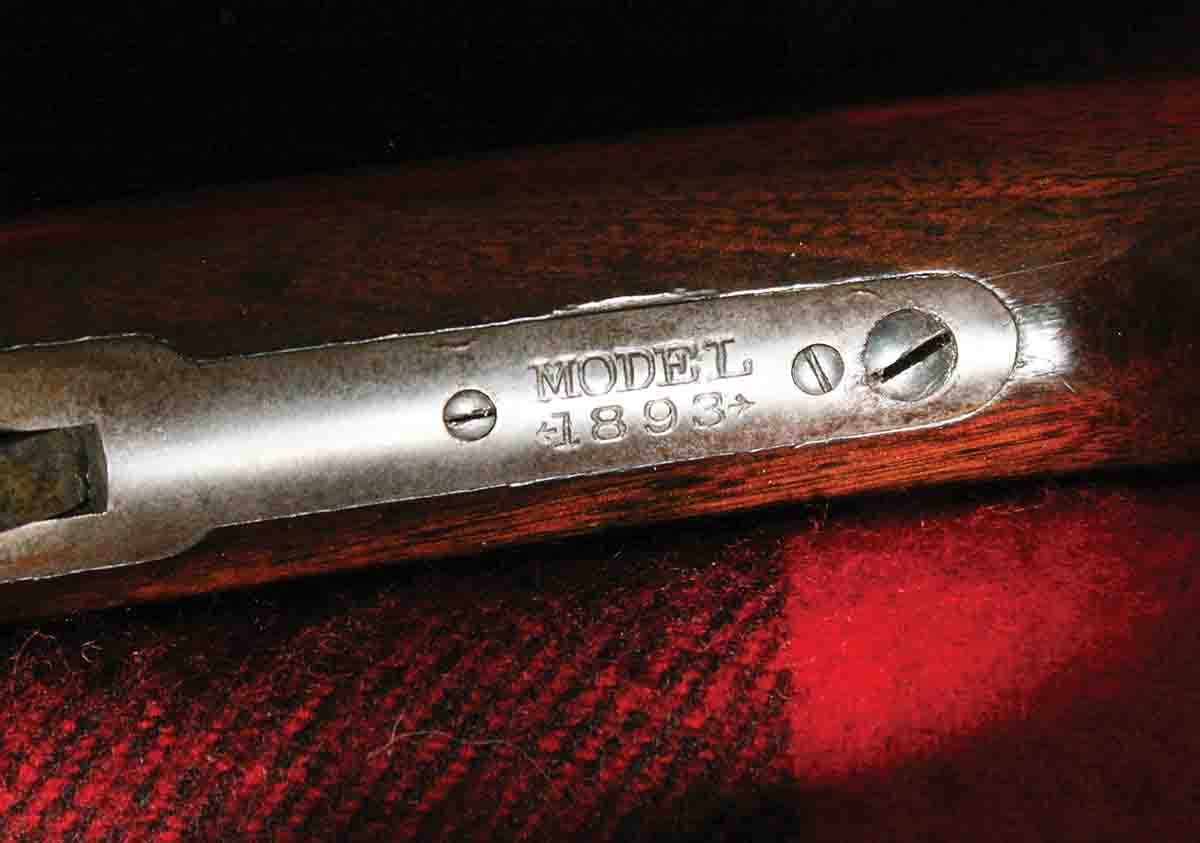
On the other hand, finding recent loading data turned out to be a problem. While my bookshelves have a collection of loading manuals going back almost a century, their .32-40 data rarely includes black powder (including Ken Waters’, despite his use of an old Stevens single shot for load testing), and often lists long-discontinued smokeless powders, or powders designated by only a number, such as 4895 – probably the original military-surplus 4895, not the presently manufactured H-4895 or IMR-4895.
Due to the .32-40 being “obsolete,” most recent manuals do not include any data – and the little available often lists bullets much heavier than 165 grains, because most modern .32-40 shooters load for single-shot target rifles. This is quite appropriate, since the .32-40 was favored by many top nineteenth-century target shooters, including Harry Pope, the famous barrel maker. In fact, Pope liked the cartridge so much that he eventually necked it up to the wildcat .33-40, so shot-out .32-40 barrels could be rebored and rerifled.
Today’s .32-40 target shooters, however, primarily use much heavier cast spitzer bullets to increase ballistic coefficient for less wind drift, requiring a faster rifling twist than the original 1:16. Unfortunately, lever-action rifles require a very limited cartridge length for rounds to function through the action.
I eventually found suitable data for my 1893 in the Lyman 50th Edition Reloading Handbook, published in 2016. It lists loads both for jacketed 170-grain flatnose bullets and the Lyman 319247 cast bullet, also listed at 170 grains.
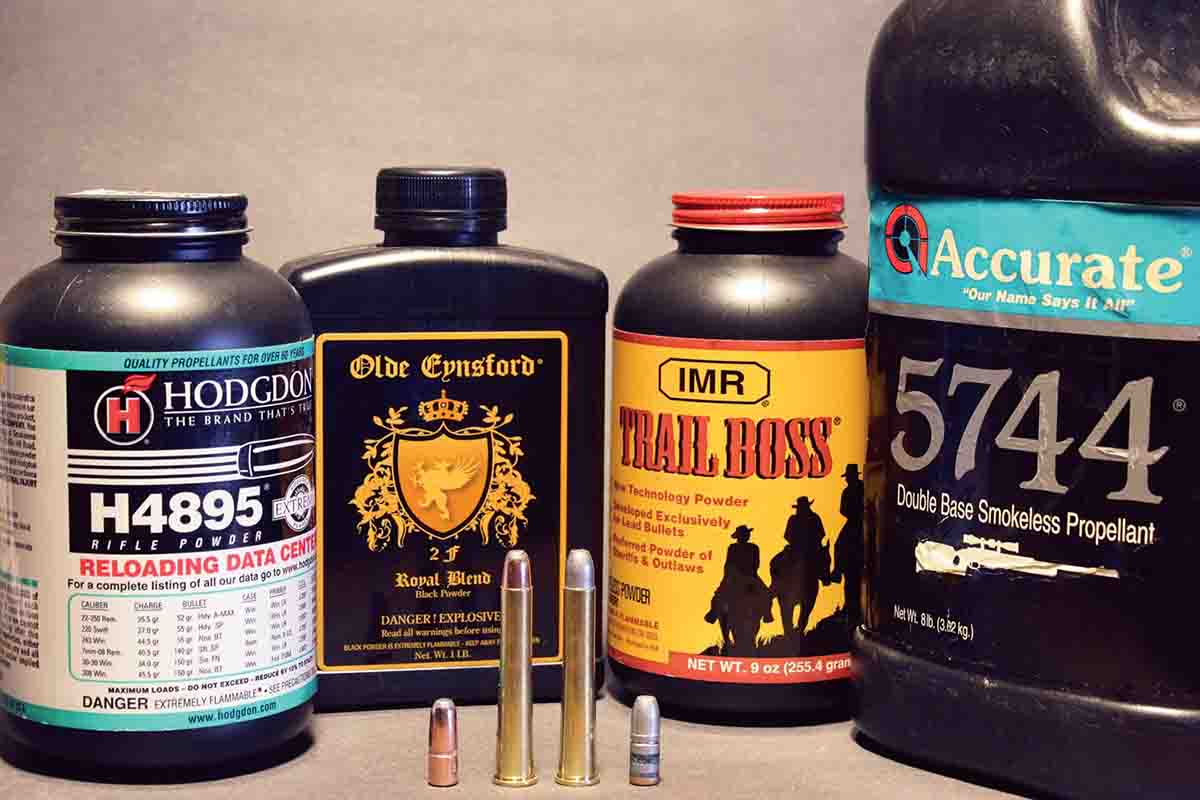
Like some other newer handloading manuals, Lyman indicates which powder produced the finest accuracy in its test barrel – for the jacketed bullet Hodgdon H-4895. For the cast bullet, Lyman indicated SR-4759 – unfortunately discontinued about the time the manual appeared. I wanted to try black powder and a couple smokeless loads with the Montana Bullet Works gas checks, so I followed my own experience and tried Accurate 5744, a very flexible smokeless powder that not only works great for full-power loads in the .223 Remington and .308 Winchester, but reduced loads duplicating black-powder velocities.
Lyman listed 31.5 grains of Goex FFg as the black powder load, but lately a new Goex powder, Olde Eynsford, had worked very well in a couple of my black-powder cartridge rifles, and my supply just happened to be FFg. IMR Trail Boss also appeared in the cast-bullet loads, the fluffy powder designed for Cowboy Action Shooting.
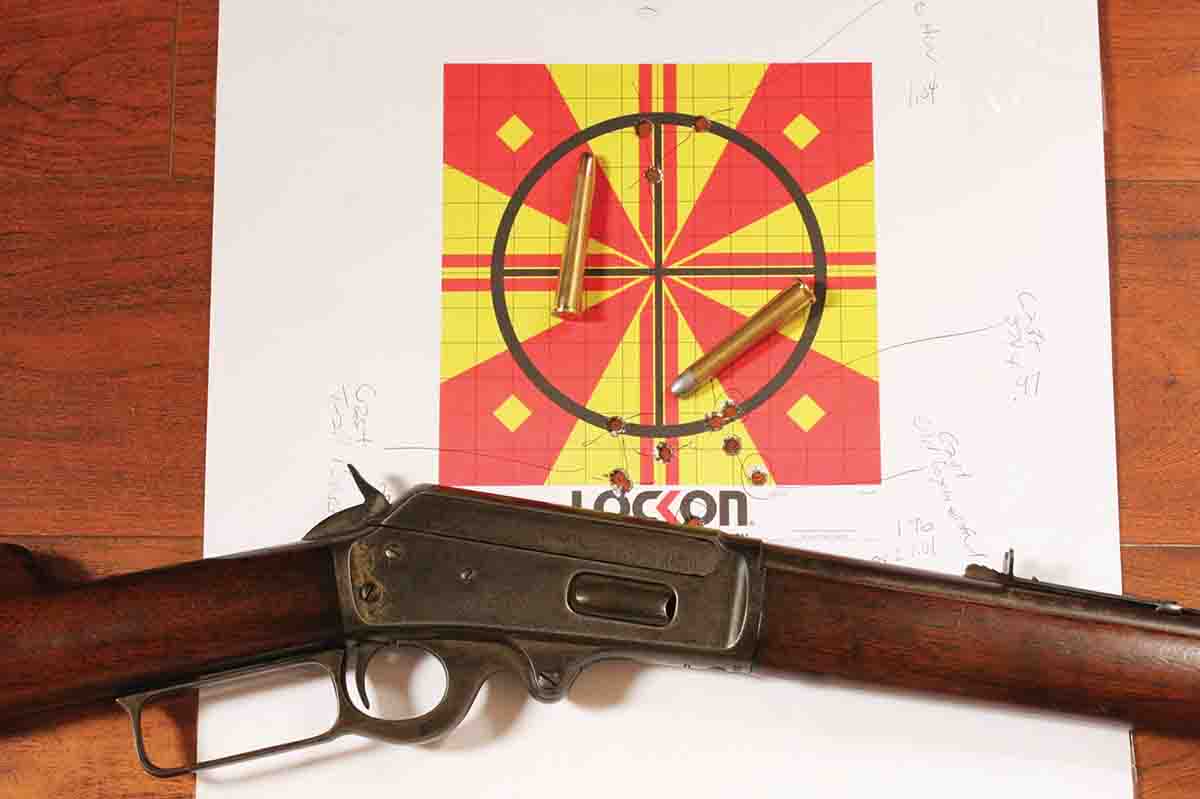
As often happens during springtime in Montana, shooting conditions varied from mediocre to miserable. The final range session occurred during tolerable weather; a sprinkle of rain driven by a 10- to 12-mph wind blowing directly from bench to the target.
The results, however, made the weather seem pretty nice. With the ladder of the buckhorn rear sight on the lowest setting, the cast-bullet loads shot right at the top of the front bead sight at 50 yards. In fact, three shots from each load went into a nine-shot group measuring 2.19 inches – and spread that much only because the Trail Boss load shot slightly to the left of the 5744 and Olde Eynsford loads. Those shot right to the same place, with five shots in 1.38 inches, and the last of the three Olde Eynsford rounds shooting slightly lower.
This tended to happen with that load, probably due to the black-powder fouling. The lube was also for smokeless loads, but when seated to 2.500 inches the crimping groove ended up down inside the neck, so I finger-filled it with SPG black powder lube. (I did not crimp any of the handloads, not because of the crimping grooves on both bullets being in the wrong place, but because I never crimp rifle handloads anymore, even .30-30s and .375 H&Hs. As Elmer Keith pointed out decades ago, case-neck tightness plays a much larger role in holding bullets in place.)
The Hornady jacketed load also shot very well, averaging just about an inch for three-shot groups – but five inches higher than the cast loads, due to the much faster muzzle velocity of nearly 1,900 fps. This may not seem particularly zippy, even when compared to the standard 170-grain .30-30 factory load at 2,200 fps. In fact, this disparity is exactly why old hunting magazines sometimes ran letters and articles questioning whether the .32-40 was enough for deer hunting. Even the Lyman manual’s notes state the .32-40 is slightly under powered compared to the .30-30 Winchester, “so it would be marginal for deer hunting.”
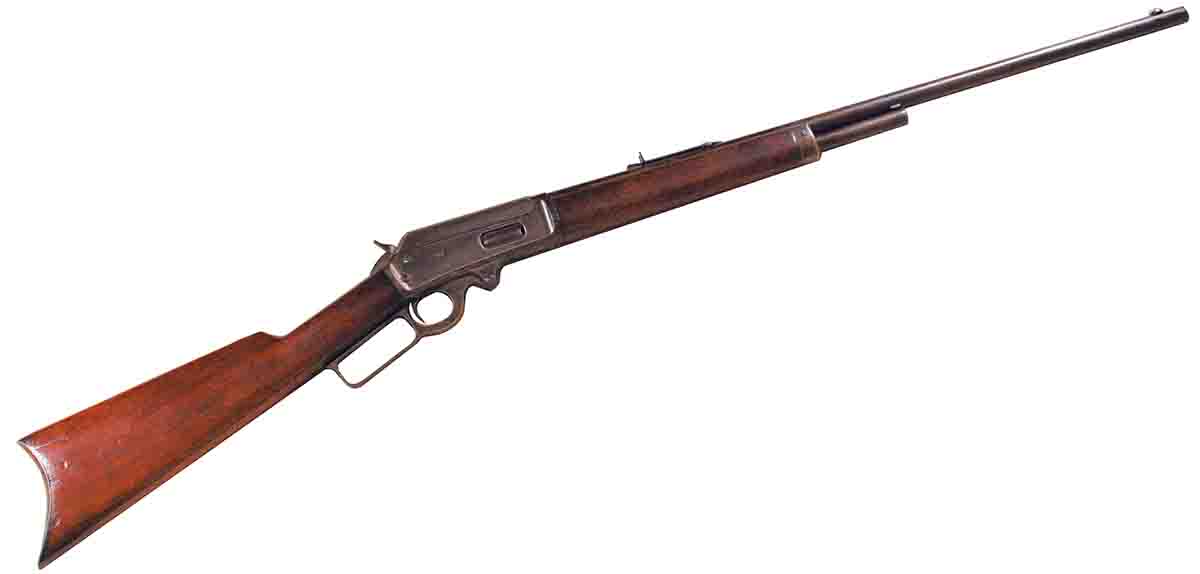
Over several decades I’ve chronographed a bunch of 170-grain .30-30 factory ammunition from both 20-inch carbine barrels and 24-inch rifle barrels. Generally, it gets between 2,100 and 2,200 fps – but while fiddling with the .32-40 I noticed the 170-grain, .32-caliber Interlock’s listed ballistic coefficient, .249, is much higher than the .189 BC of Hornady’s 170-grain .30-caliber flatnose. This seemed odd, since generally a bullet of the same weight and shape but a larger caliber will have a lower BC. This is apparently due to the .30-caliber 170 grain having a wider flatnose than the .32 caliber.
I ran the numbers through Hornady’s online ballistics calculator, which indicated the .321 Hornady at 1,900 fps catches up to the velocity of the 170-grain .30 started at 2,100 fps at just about 200 yards, which is often considered the practical deer-hunting limit for the .30-30. Based on some experience with the .30-30, I doubt any deer hit in the right place with the Hornady .32-40 handload would consider it marginal.
All the handloads chronographed within a few fps of the listed velocity of the Lyman loads, which as any longtime handloader knows is pretty unusual. Their test barrel was 24 inches long, and I did use the same CCI 200 primers, but Lyman apparently could not find any .32-40 brass, instead using reformed Starline .38-55 cases.
I plan to hunt with the Hornady load, so obviously have to either install a higher front sight, or a receiver or tang aperture sight, and the rifle left the Marlin factory drilled and tapped for both. Right now I cannot decide, but do know the rifle’s nice balance and light weight, combined with the fine trigger, make the 1893 practically perfect for slipping quietly through the deer woods, especially when wearing a red-checked wool coat, like the Filson Double Mackinaw hanging in my hunting-clothes closet among quite a bit of camouflage made of miracle fibers. Modern rifles and clothes work great for big-game hunting, but some of us occasionally prefer to travel back in time.


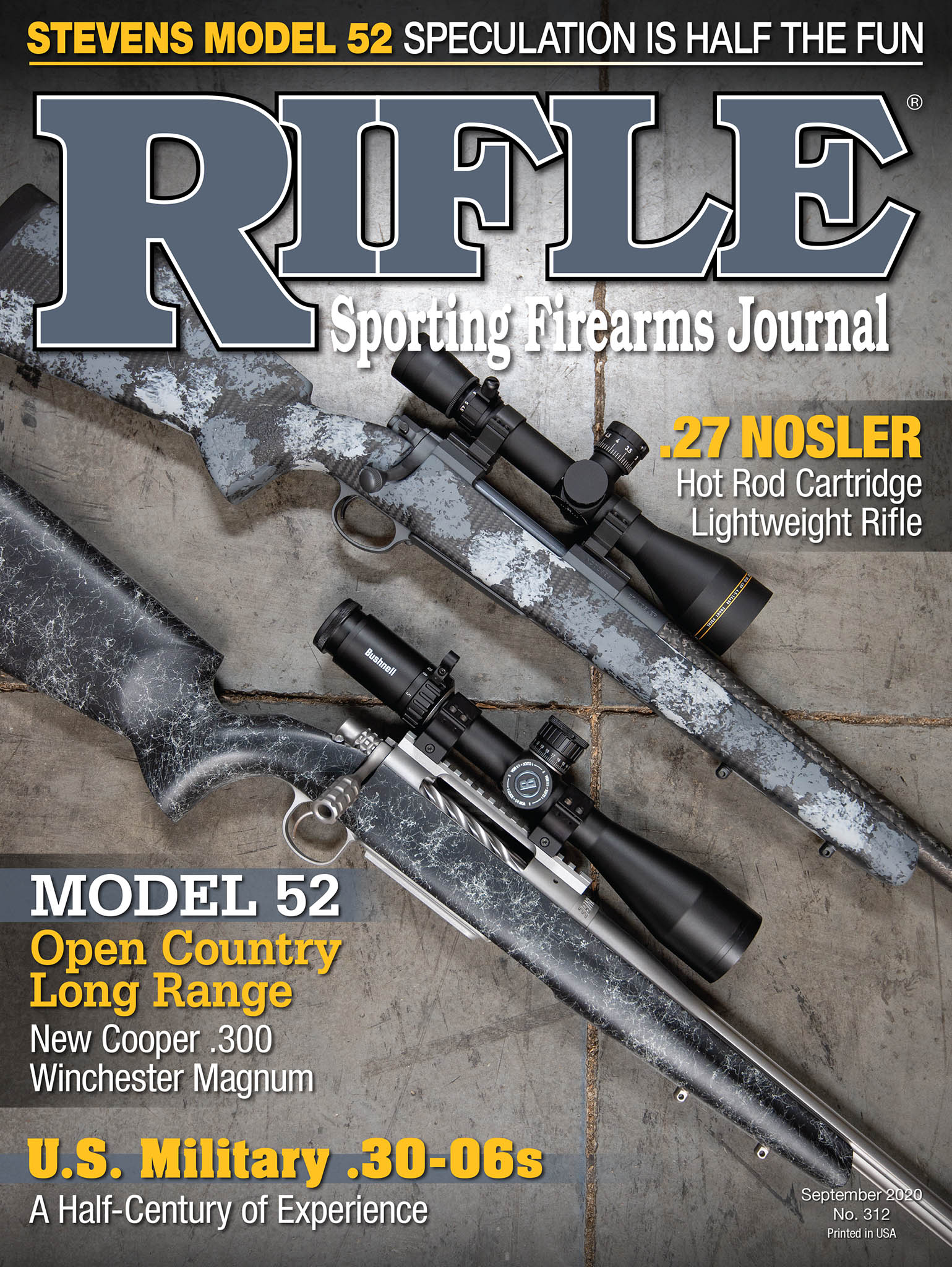
.jpg)